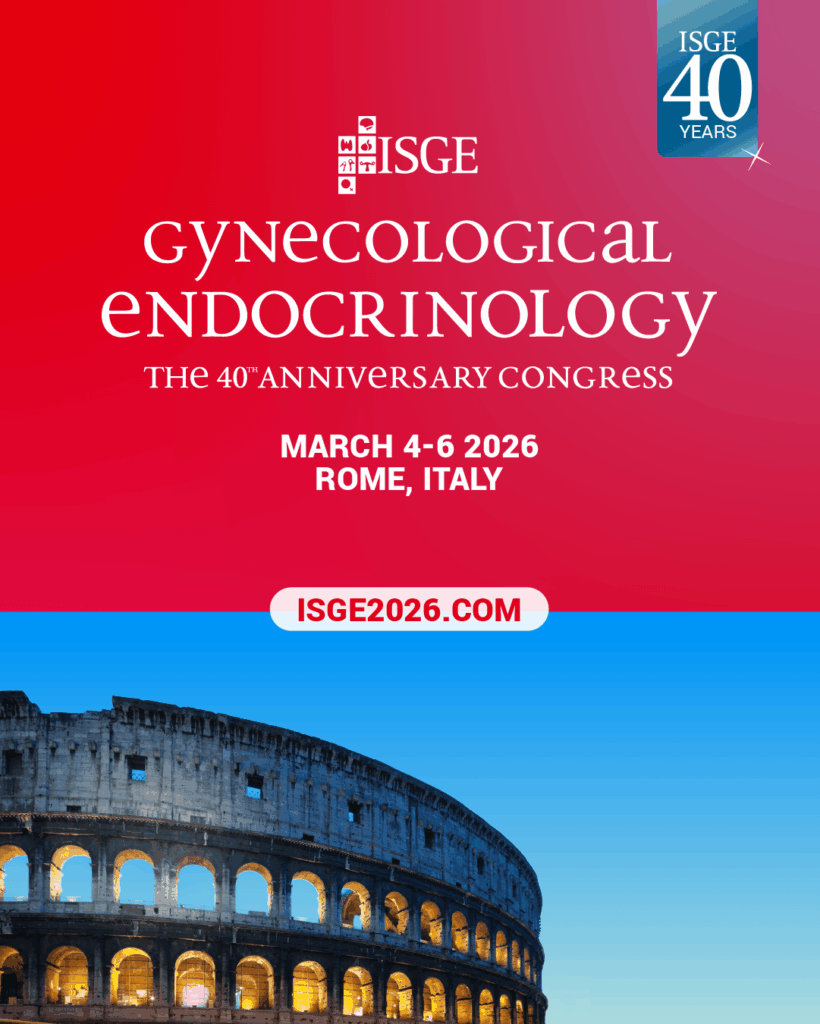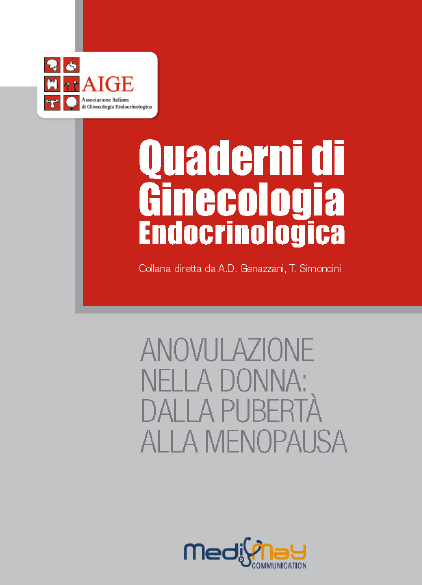-
Stefano Basile, Luca Salvati, Paolo Giovanni Artini, Sara Pinelli
Vitamin D and infertility: a narrative reviewGynecological and Reproductive Endocrinology and Metabolism 2021; 2(1):15-20
DownloadAbstract
Background and purpose: Vitamin D, in both women and men, has been shown to be involved in modulation of the reproductive process, due to expression of the vitamin D receptor and of 1-alpha-hydroxylase in reproductive tissues such as the ovaries, testes, uterus, placenta, pituitary gland, and in the hypothalamus. The authors provide an overview of clinical data on the role of vitamin D in conditions possibly associated with female infertility.
Methods: The PubMed database was searched for eligible studies published by May 10th 2020. The search was conducted by matching the term “vitamin D” with the following terms: “infertility”, “in vitro fertilization”/“IVF”, “polycystic ovary syndrome”/“PCOS” (and also “insulin-resistance”), “endometriosis”, “primary dysmenorrhea”, “uterine leiomyoma”, “ovarian reserve”.
Results: The final number of papers included in our review was 49. Findings were grouped under the headings: in vitro fertilization, polycystic ovary syndrome (PCOS), endometriosis, primary dysmenorrhea, uterine leiomyoma, ovarian reserve. Contrasting results were found regarding vitamin D levels in IVF and PCOS, as well as on the role of vitamin D in endometriosis. The literature provides scarce data on primary dysmenorrhea and uterine leiomyoma in relation to vitamin D. Although some studies showed no overall correlation between vitamin D and anti-Müllerian hormone (AMH) levels in the infertile population, vitamin D deficiency could be associated with lower ovarian reserve in women aged >40 years.
Conclusions: Vitamin D deficiency is very common in fertile and infertile women. This deficiency is correlated with a variety of adverse outcomes in different conditions associated with infertility. While there are numerous conflicting studies on the relationship of vitamin D levels with AMH levels, PCOS and endometriosis, vitamin D, influencing endometrial thickness, plays a considerable role in intracytoplasmic sperm injection and in in vitro fertilization. It also plays an important role in the development of insulin resistance. -
Svetlana Vujovic, Miomira Ivovic, Milina Tancic Gajic, Ljiljana V. Marina, Zorana Arizanovic, Goran Citlucanin, Svetlana Dragojevic Dikic
Effects of different menopause hormone therapy routes of administration on insulin levels in early menopausal non-diabetic subjectsGynecological and Reproductive Endocrinology and Metabolism 2021; 2(1):60-64
DownloadAbstract
Background and purpose: Hyperinsulinism and hypoestrogenism in the menopause are triggering factors for many diseases. The aim of this study was to ascertain out the most useful and acceptable test for interpreting insulin sensitivity in women receiving menopause hormone therapy (MHT).
Methods: Menopausal women, with normal BMI, were divided into three groups, according to the route of administration of MHT (oral, transdermal, intramuscular). Blood samples for measurement of follicle-stimulating hormone (FSH), luteinizing hormone (LH), estradiol, progesterone, prolactin, testosterone, dehydroepiandrosterone sulphate (DHEAS), sex hormone binding globulin (SHBG) and thyroid-stimulating hormone (TSH) were taken at 8 a.m. Oral glucose tolerance test (OGTT) was performed with 75 gr of glucose. Glucose and insulin were measured at 0,30,60,90 and 120 minutes after glucose ingestion. All tests were performed before initiating MHT, after six months and after 2 years. Serum concentrations of hormones were measured by radioimmunoassay. In order to identify the most valuable test for detecting insulin secretion, the HOMA-IR index, Matsuda index and area under the curve (AUC) for glucose and insulin were calculated at all three timepoints and for all routes of administration of MHT.
Results: In all three groups, FSH, LH and DHEAS decreased significantly, whilst estradiol and SHBG increased. The insulin AUC decreased significantly in all groups, most markedly in the oral administration group, compared with pretreatment, (4236.2+1726.6 vs 6842.1+3720.7, p<0.01). The HOMA-IR index also decreased significantly. No changes in the Matsuda index of the glucose AUC were observed.
Conclusions: This study suggests that the OGTT can be recommended test, before initiating MHT, in order to detect hyperinsulinism with its unfavourable proinflammatory, proatherogenic and prothrombotic effects on blood vessels, that the insulin AUC represents the most accurate means of calculating insulin secretion level and that MHT alone, or with metformin, after individual optimalization, can prevent diseases, providing asymptomatic transition from the reproductive period to the menopause and improving quality of life. -
Marie Mawet, Ulysse Gaspard, Jean-Michel Foidart
Estetrol as estrogen in a combined oral contraceptive, from the first in-human study to the contraceptive efficacyEuropean Gynecology and Obstetrics. 2021; 3(1):13-21
DownloadAbstract
Even though the use of combined oral contraceptive (COC) has numerous health benefits, it is associated with an increased risk of venous thromboembolism (VTE). Currently, the second generation COCs [ethinylestradiol (EE) with levonorgestrel (LNG)] are considered as the safest regarding the VTE risk but the androgenicity of LNG is responsible for undesirable side effects (acne, hirsutism and mood alteration) jeopardizing compliance. In the opposite, the use of less androgenic progestins or anti-androgenic progestins such as drospirenone (DRSP) is better tolerated but doubles the risk of VTE in comparison with EE/LNG. Replacing EE by a natural estrogen has been suggested to improve the VTE risk. Estetrol (E4) is a natural estrogen only produced by the human fetal liver. In-vivo and in-vitro fundamental studies suggest that E4 is safer than EE and estradiol (E2) on important estrogenic targets such as breast tissue and synthesis of liver proteins (responsible for hemostasis impairments associated with the use of estrogens). A vast clinical program has recently been conducted in order to evaluate the use of E4 as estrogen in a COC. A dose-finding program studied different combinations of E4 with DRSP or LNG. Ovulation inhibition, bleeding pattern, and tolerance were used to select the best E4-COC for further evaluation. All the E4-COCs tested were safe and capable of blocking ovulation. However, 15 mg E4 with 3 mg DRSP was associated with the best bleeding pattern and the highest tolerance. In addition, the changes in hemostasis parameters elicited by 15 mg E4/DRSP were significantly less pronounced than those recorded with EE/ DRSP, and similar or even lower than those seen with the safe EE/LNG. This combination was therefore selected to be further evaluated in a Phase 3 program where it confirmed its excellent safety and contraceptive efficacy.
-
Colleen F. McKenna, Amadeo F. Salvador, Riley L. Hughes, Susannah E. Scaroni, Rafael A. Alamilla, Andrew T. Askow, Scott A. Paluska, Anna C. Dilger, Hannah D. Holscher, Michael De Lisio, Naiman A. Khan, Nicholas A. Burd
Higher protein intake during resistance training does not potentiate strength, but modulates gut microbiota, in middle-aged adults: a randomized control trialAm J Physiol Endocrinol Metab 320: E900–E913, 2021
DownloadAbstract
Protein intake above the recommended dietary allowance (RDA) and resistance training are known anabolic stimuli to support healthy aging. Specifically, protein supplementation after resistance exercise and nightly are strategies to maximize utilization of protein intake above the RDA in healthy adults. As such, the primary objective was to examine the efficacy of protein supplementation and nutritional counseling resulting in either moderate (MOD: 1.0 g·kg1 ·day1 ) or higher (HIGH: 1.6 g·kg1 ·day1 ) protein intake during resistance training on strength (one-repetition maximum, 1-RM; isokinetic and isometric peak torque) in healthy middle-aged adults. Exploratory analyses include diet-exercise effects on lean body mass (LBM), clinical biomarkers, gut microbiota, and diet composition. In all, 50 middle-aged adults (age: 50 ± 8 yr, BMI: 27.2 ± 4.1 kg/m2 ) were randomized to either MOD or HIGH protein intake during a 10-wk resistance training program (3 wk). Participants received dietary counseling and consumed either 15 g (MOD) or 30 g (HIGH) of protein from lean beef in the immediate postexercise period and each evening. Maximal strength (1-RM) for all upper and lower body exercises significantly increased with no effect of protein intake (P < 0.050). There was a main effect of time for LBM (P < 0.005). Cardiovascular, renal, or glycemic biomarkers were not affected by the intervention. Gut microbiota were associated with several health outcomes (P < 0.050). In conclusion, higher protein intake above moderate amounts does not potentiate resistance training adaptations in previously untrained middle-aged adults. This trial was registered at clinicaltrials.gov as NCT03029975.
-
Satu Seppä, Tanja Kuiri-Hänninen, Elina Holopainen, Raimo Voutilainen
MANAGEMENT OF ENDOCRINE DISEASE: Diagnosis and management of primary amenorrhea and female delayed pubertyEuropean Journal of Endocrinology (2021) 184, R225–R242-20-14871846
DownloadAbstract
Puberty is the period of transition from childhood to adulthood characterized by the attainment of adult height and body composition, accrual of bone strength and the acquisition of secondary sexual characteristics, psychosocial maturation and reproductive capacity. In girls, menarche is a late marker of puberty. Primary amenorrhea is defined as the absence of menarche in ≥ 15-year-old females with developed secondary sexual characteristics and normal growth or in ≥13-year-old females without signs of pubertal development. Furthermore, evaluation for primary amenorrhea should be considered in the absence of menarche 3 years after thelarche (start of breast development) or 5 years after thelarche, if that occurred before the age of 10 years. A variety of disorders in the hypothalamus–pituitary–ovarian axis can lead to primary amenorrhea with delayed, arrested or normal pubertal development. Etiologies can be categorized as hypothalamic or pituitary disorders causing hypogonadotropic hypogonadism, gonadal disorders causing hypergonadotropic hypogonadism, disorders of other endocrine glands, and congenital utero–vaginal anomalies. This article gives a comprehensive review of the etiologies, diagnostics and management of primary amenorrhea from the perspective of pediatric endocrinologists and gynecologists. The goals of treatment vary depending on both the etiology and the patient; with timely etiological diagnostics fertility may be attained even in those situations where no curable treatment exists.
-
Vita Birzniece, Ken K Y Ho
Paracrine and endocrine control of the growth hormone axis by estrogenEuropean Journal of Endocrinology (2021) 184, R269–R278
DownloadAbstract
There is a strong biological link between the growth hormone (GH) and gonadal systems in growth, development and metabolism; however, regulatory interactions are poorly understood. Advances in estrogen biology and endocrine physiology have provided insights into mechanistic links between the two systems. Estrogens are synthesized from androgens by aromatase which is widely distributed in extragonadal tissues. Local generation of estrogens raise the possibility of paracrine control as an additional level to classical endocrine regulation of the GH system. To explore the mechanistic links, we review the pharmacology of estrogen, the effects of estrogen replacement, antagonism, and the impact of aromatase inhibition on the GH system as well as the metabolic sequelae. In men, estrogens derived from androgens drive the central secretion of GH, independent of the androgen receptor. In hypogonadal women, physiological replacement via a parenteral route evokes no effect while estrogen receptor antagonism and estrogen deprivation induce disparate effects, providing no consistent evidence that estrogens regulate the central secretion of GH via paracrine or endocrine mechanisms. However, delivery of estrogen by the oral route inhibits hepatic IGF-1 production, in turn increasing GH secretion via reduced feedback inhibition. This endocrine route-dependent effect of oral estrogen compounds on hepatic function induces detrimental metabolic effects on hypogonadal women. In conclusion, estrogens regulate the secretion and action of GH via complex paracrine and endocrine interactions and impart metabolic effects in a route- and gender-dependent manner. The metabolic sequelae of compounds mimicking, antagonizing, or depleting estrogens, should be considered in tailoring and optimizing their use.
-
Fahimeh Ramezani Tehrani, Samira Behboudi-Gandevani, Razieh Bidhendi Yarandi, Marzieh Saei Ghare Naz & Enrico Carmina
Prevalence of acne vulgaris among women with polycystic ovary syndrome: a systemic review and meta-analysisGynecol Endocrinol 2021 37: 392-405Abstract
Objective The aim of this meta-analysis was to evaluate the prevalence of acne among women with PCOS worldwide, and in subgroups of patients with different age, geographical-region, and PCOS definition-criteria, compared to healthy non-PCOS counterparts.
Methods A comprehensive literature search was performed in PubMed (including Medline), Web of Science, and Scopus databases for retrieving articles in English investigating the prevalence of PCOS. ‘Meta-prop’ method was applied to estimate pooled prevalence of acne in both groups. Meta-regression was conducted to find the association between acne in women with and without PCOS.
Results We used 60 studies, included data of 240,213 women with PCOS and 1,902,022 healthy-controls for the meta-analysis. The overall pooled prevalence of acne among women with and without PCOS, was 43% (95% CI: 41–45%) and 21% (95% CI: 19–22%), respectively, which was 1.6-fold significantly higher than among healthy-controls. The pooled prevalence of acne in adults, and in adolescents PCOS patients were 42 and 59%, respectively, which were significantly higher than non-PCOS counterparts. The pooled estimated prevalence of acne in adult PCOS women was 76% using the NIH definition and 36% by Rotterdam-criteria; both were significantly higher than non-PCOS counterparts, respectively. In subgroups of adults, who used Rotterdam-definition, the highest prevalence of acne in PCOS patients was reported in East Asia and was 3.5-fold higher than non-PCOS counterparts.
Conclusions Despite the presence of heterogeneity and publication bias among available literature, it may be concluded that acne is one of the common dermatological manifestations in PCOS. In addition, results highlight geographical differences among PCOS patients. -
Li Wang, Xinqiang Wen, Shulan Lv, Sijuan Tian, Yifan Jiang & Xiaofeng Yang
Effects of vitamin D supplementation on metabolic parameters of women with polycystic ovary syndrome: a meta-analysis of randomized controlled trialsGynecological Endocrinology, 37:5, 446-455
DownloadAbstract
Objective: The purpose of this meta-analysis was to evaluate the effects of vitamin D supplementation on metabolic parameters of women with polycystic ovary syndrome (PCOS).
Methods: We performed a literature search of databases and identified randomized controlled trials (RCTs) published prior to December 2019. A meta-analysis was conducted using RevMan 5.3 and Stata 12.0 software. We compared the effects of vitamin D supplementation alone to the administration of placebos on metabolic parameters of PCOS women with vitamin D deficiency.
Results: Ten articles of RCTs were included and analyzed in this meta-analysis, which included a total of 520 PCOS women. Our meta-analysis results showed no significant effects of vitamin D supplementation on BMI (p ¼ .43), systolic blood pressure (p ¼ .05), diastolic blood pressure (p ¼ .87), fasting insulin concentration (p ¼ .86), HOMA-IR (p ¼ .47), HDL-C (p ¼ .76), LDL-C (p ¼ .23) and triglyceride (p ¼ .77). Both low dose vitamin D supplementation (<4000 IU/day) and high dose vitamin D supplementation (≥4000 IU/day) were found to significantly decreased the fasting glucose concentration (p = .01, p = .001, respectively). Vitamin D supplementation significantly decreased total cholesterol concentration (p = .03).
Conclusions The results of this meta-analysis suggested that vitamin D supplementation decreases fasting glucose concentration and total cholesterol concentration in PCOS women with vitamin D deficiency.
Abstracts selezionati
-
Stefano Basile, Luca Salvati, Paolo Giovanni Artini, Sara Pinelli
Vitamin D and infertility: a narrative reviewGynecological and Reproductive Endocrinology and Metabolism 2021; 2(1):15-20
Download -
Svetlana Vujovic, Miomira Ivovic, Milina Tancic Gajic, Ljiljana V. Marina, Zorana Arizanovic, Goran Citlucanin, Svetlana Dragojevic Dikic
Effects of different menopause hormone therapy routes of administration on insulin levels in early menopausal non-diabetic subjectsGynecological and Reproductive Endocrinology and Metabolism 2021; 2(1):60-64
Download -
Marie Mawet, Ulysse Gaspard, Jean-Michel Foidart
Estetrol as estrogen in a combined oral contraceptive, from the first in-human study to the contraceptive efficacyEuropean Gynecology and Obstetrics. 2021; 3(1):13-21
Download -
Colleen F. McKenna, Amadeo F. Salvador, Riley L. Hughes, Susannah E. Scaroni, Rafael A. Alamilla, Andrew T. Askow, Scott A. Paluska, Anna C. Dilger, Hannah D. Holscher, Michael De Lisio, Naiman A. Khan, Nicholas A. Burd
Higher protein intake during resistance training does not potentiate strength, but modulates gut microbiota, in middle-aged adults: a randomized control trialAm J Physiol Endocrinol Metab 320: E900–E913, 2021
Download -
Satu Seppä, Tanja Kuiri-Hänninen, Elina Holopainen, Raimo Voutilainen
MANAGEMENT OF ENDOCRINE DISEASE: Diagnosis and management of primary amenorrhea and female delayed pubertyEuropean Journal of Endocrinology (2021) 184, R225–R242-20-14871846
Download -
Vita Birzniece, Ken K Y Ho
Paracrine and endocrine control of the growth hormone axis by estrogenEuropean Journal of Endocrinology (2021) 184, R269–R278
Download -
Fahimeh Ramezani Tehrani, Samira Behboudi-Gandevani, Razieh Bidhendi Yarandi, Marzieh Saei Ghare Naz & Enrico Carmina
Prevalence of acne vulgaris among women with polycystic ovary syndrome: a systemic review and meta-analysisGynecol Endocrinol 2021 37: 392-405 -
Li Wang, Xinqiang Wen, Shulan Lv, Sijuan Tian, Yifan Jiang & Xiaofeng Yang
Effects of vitamin D supplementation on metabolic parameters of women with polycystic ovary syndrome: a meta-analysis of randomized controlled trialsGynecological Endocrinology, 37:5, 446-455
Download






